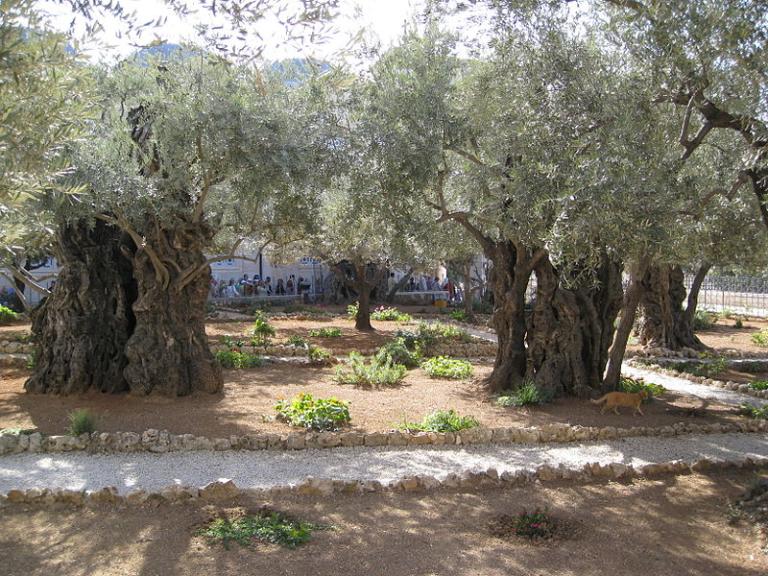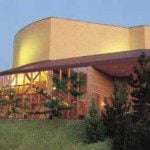
(Wikimedia Commons public domain image)
This entry draws upon John W. Welch, et al., eds. Knowing Why: 137 Evidences That the Book of Mormon Is True (American Fork: Covenant Communications, 2017), 156-164:
One of the single most famous chapters in the Book of Mormon is Jacob 5, which recounts a lengthy olive tree allegory that it credits to a pre-Lehite Old World prophet, unknown to the Bible, that it identifies as Zenos. (As a matter of fact, Zenos is cited elsewhere in the Book of Mormon as well. He seems to have been popular among Nephite religious leaders.) Various inconclusive attempts have been made to identify him in surviving ancient extrabiblical records. Symbolic use of imagery derived from olive cultivation also exists throughout the Old and New Testaments. With that fact in mind, David Rolph Seely and John W. Welch of Brigham Young University have argued that “it is reasonable to postulate the existence of a fuller account of the olive tree allegory that predates most or all of these diverse and more partial uses” (159). And perhaps Zenos’s version is that “fuller account.
In any event, Jacob 5 plainly has roots deep in the ancient world.
Further, with its references to grafting, transplanting tender young branches, balancing the growth of the branches with the roots, nourishing, digging about, burning, weeding, and pruning, it also accurately represents many of the practices and scientific principles associated with growing and cultivating olives in the Mediterranean basin.
According to an article by several professional botanists:
Nearly all of the allegory in Jacob 5 corresponds exceptionally well with both ancient and modern botanical principles and horticultural practices. . . . It is hard to imagine that its author was not personally familiar with the minute details and practices involved in raising good olives in a Mediterranean climate. (163)
Moreover, although some very limited information about olive cultivation might be derivable through careful, focused study of the Bible and a few other books that were available during Joseph Smith’s early years (though likely not anywhere near where he lived), they contained only sparse details. And here’s another problem:
Joseph Smith probably had little knowledge of olive trees in New York, as they will not grow in the northeastern United States. (163)
For further reading, see:
John W. Welch, “The Last Words of Cenez and the Book of Mormon,” in Stephen D. Ricks and John W. Welch, eds., The Allegory of the Olive Tree: The Olive, the Bible, and Jacob 5 (Salt Lake City and Provo, UT: Deseret Book and FARMS, 1994), 305—321.
David Rolph Seely and John W. Welch, “Zenos and the Texts of the Old Testament,” in Stephen D. Ricks and John W. Welch, eds., The Allegory of the Olive Tree: The Olive, the Bible, and Jacob 5 (Salt Lake City and Provo, UT: Deseret Book and FARMS, 1994), 322—346.
David Rolph Seely, “The Allegory of the Olive Tree and the Use of Related Figurative Language in the Ancient Near East and Old Testament,” in Stephen D. Ricks and John W. Welch, eds., The Allegory of the Olive Tree: The Olive, the Bible, and Jacob 5 (Salt Lake City and Provo, UT: Deseret Book and FARMS, 1994), 290–304.
James E. Faulconer, “The Olive Tree and the Works of God: Jacob 5 and Romans 11,” in Stephen D. Ricks and John W. Welch, eds., The Allegory of the Olive Tree: The Olive, the Bible, and Jacob 5 (Salt Lake City and Provo, UT: Deseret Book and FARMS, 1994), 347–366.
John W. Welch and J. Gregory Welch, Charting the Book of Mormon: Visual Aids for Personal Study and Teaching (Provo, UT: FARMS, 1999), charts 81, 82, 83, and 95.
Wilford M. Hess, “Recent Notes about Olives in Antiquity,” BYU Studies 39/4 (2000): 115-126.
Wilford M. Hess, Daniel J. Fairbanks, John W. Welch, and Jonathan K. Diggs, “Botanical Aspects of Olive Culture Relevant to Jacob 5,”in Stephen D. Ricks and John W. Welch, eds., The Allegory of the Olive Tree: The Olive, the Bible, and Jacob 5 (Salt Lake City and Provo, UT: Deseret Book and FARMS, 1994), 484–562.
Wilford M. Hess, “Botanical Comparisons in the Allegory of the Olive Tree,” in Jacob through Words of Mormon, To Learn with Joy, Monte S. Nyman and Charles D. Tate Jr., eds. (Provo, UT: Religious Studies Center, Brigham Young University, 1990), 87–102.












